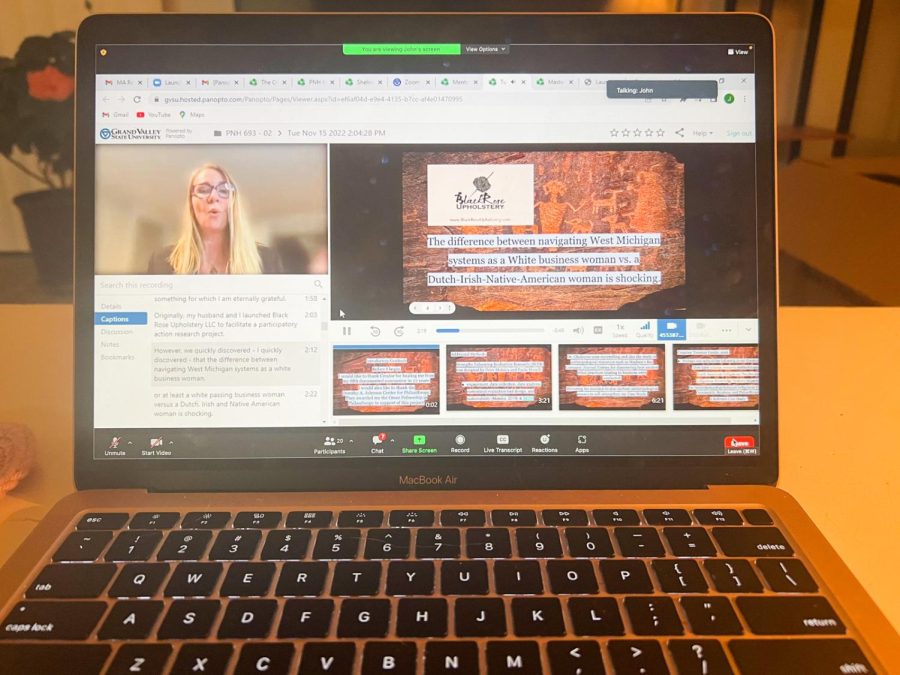Graduate students showcase their research projects
Nov 28, 2022
Grand Valley State University hosted a collaborative event for their graduate students this past week, showcasing their research design proposals. The event highlighted work by students in the Masters of Arts in Social Innovation program under the School of Community Leadership and Development (SCLD).
The program began in 2019 and GVSU is the only university in Michigan that offers a program like it. Students in this program were able to share the designs they are interested in working on, while getting feedback from their peers and mentors.
This program trains GVSU students on how to become active citizens in their communities, showing them why it’s important to help contribute to their communities locally, nationally and globally. SCLD also helps students get careers in government, nonprofit and healthcare organizations.
All that social innovation entails was broken down into two separate events. The first event was about the research projects that graduate students have worked on in the duration of their course and their plan to conduct them. The second event gave graduate students the opportunity to present their completed research projects.
“This is important for students because we do problem solving at the social level in all sectors,” said Graduate Program Director Dr. Azfar Hussain.
The Social Innovation Research Design Showcase was held in order to highlight student projects. There were a total of six speakers that connected their research projects to their life experiences.
Tonya Pell, a graduate student, made a personal connection between her research and passion for education and youth development.
“I decided on a research question asking why parents are often not the main source of comprehensive sex education for their children and how can this be addressed through parent education curriculum,” Pell said.
Through extensive background research and the use of different methodologies, she discussed how a combination of interviews and surveys will supply different forms of information.
Mareeta Braken, a graduate student who also has experience working with child protective services, said her research topic of the overrepresentation of African American children in child welfare related to her on a personal level.
“As a Black mom, I know what it feels like to be oppressed,” Bracken said.
Bracken said that African American children are entering foster care at a much higher rate than other races. This is what inspired her to focus on teachers, as they can be the ones calling the welfare system.
“Teachers felt like they did not need diversity training when it should be mandated,” Bracken said. “In turn, they are not properly equipped.”
At the conclusion of the presentations the audience had the opportunity to ask questions about different research proposals. Audience members asked things such as how the students came up with their research question and how they planned to follow through with their research in order to get beneficial results.
The Social Innovation program aims to address complex social issues ranging from environmental issues to education equality.
“(Students) feel at home in this program with the belongingness that they feel in a short span of time, given that they can exercise their own agency, build their own research projects and have a say when it comes to the decision-making process,” Hussain said.























